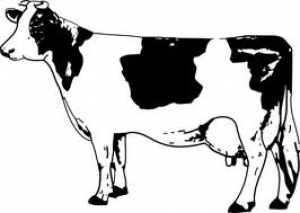Dairy farming

Responding to strong commodity prices, American planting figures confirm that an extra 3.5 million acres of wheat has been sown in the US for 2012 harvest.
Although still short of the high of 2008 (63.2 m acres), it’s still a significant increase and adds to a continued rebuilding in global wheat stocks. In three of the last four years, global wheat stocks have increased. This is expected to put downwards pressure on wheat price, with USDA forecasting a 3.7 per cent decrease in 2012/13. That said, USDA forecast pricing levels to remain at a relative high.
Downward pressure may come from a big increase in the corn area.
Plantings are at their highest since the 1940s, with sowings estimated at 94 million acres. In addition, the last two years have seen below average corn farms. With a return to average yields and the increased area, the anticipated growth in supply will push American corn prices down by close to 20 per cent.
Much will depend on the use of corn by the ethanol industry. Policy incentives have been removed and there are high levels of stocks, meaning that demand is set to decline marginally. Decreased fuel use is likely compared to original Department of Energy forecasts, triggered by American drivers travelling fewer miles and buying more efficient cars.
Further uncertainty is added by supplies from South America, where Brazil has become the third largest corn producer in the world and Argentina has almost doubled grain production since 1995. The focus will undoubtedly be on how weather in the run-up to harvest will shape world market prices.
On the plus side for American agriculture, an improvement for livestock producers in the latter half of 2012 is forecast as cheaper feed sees margins improve. Demand is forecast to remain strong, with the weak dollar helping support exports. US prices are set to strengthen further, with beef and poultry forecast to increase nine per cent and seven per cent respectively. It is something of a varying regional picture, with southern producers still recovering from drought.
The bottom line for American producers, however, is a lower level of profitability.
Average net farm income is forecast to fall 6.5 per cent year on year. Like farmers around the world, rising input costs has been the key concern for US farmers. They saw 14 per cent increases in production costs in 2011. Costs will still rise in 2012, albeit at a slower rate of four per cent. That said, farm income in the USA is rising over the longer term. This is reflected by the fact that tractor and combine sales have almost doubled since 2000.























